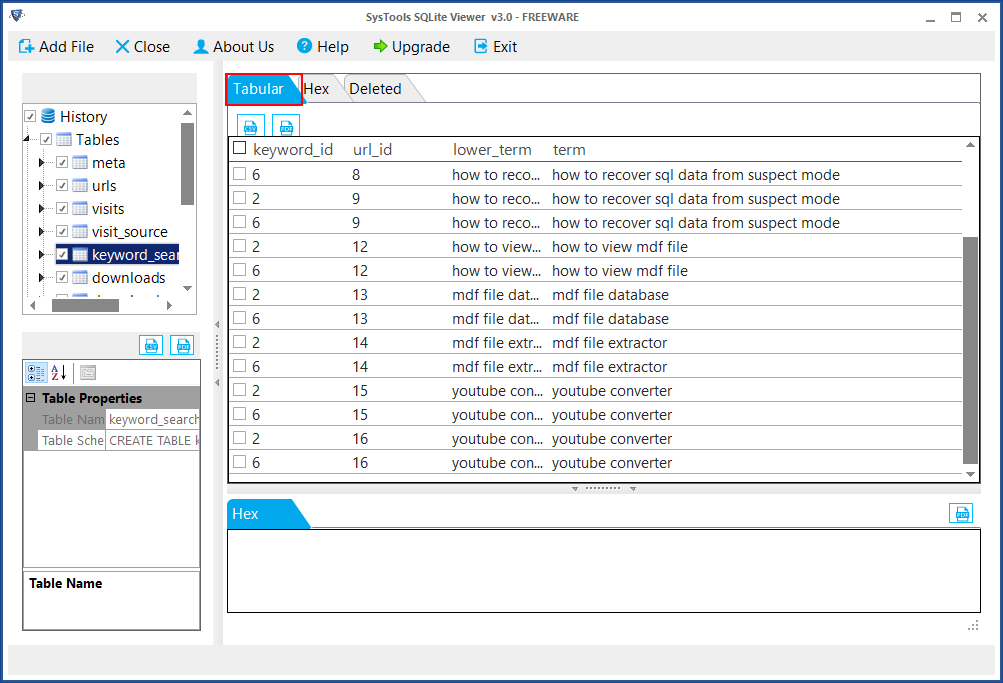

#Db file reader windows#
The windows OS ensures that every time user visits a website or views an image online the thumbnail is saved in the cache. To make the tutorial further simple and in line with the demands, the processes that are mentioned are embedded with screenshots. The user gets an inside idea about the thumbs.db files and related ideas. The complete process that can be used to get rid of the issue is also discussed. This tutorial has been written to ensure that the user gets the best outcome in this regard.
#Db file reader how to#
Part 4: How to permanently stop the files from being created again windows 7.
#Db file reader windows 8#
Part 3: How to permanently stop the files from being created again windows 8.Part 2: Security issues related to the thumbs.db files.The thumbs.db file related to all the thumbnails that are created onto the hard drive. Some users don't like these files to e created and want them to stop. It is for the same reason that the related files are created onto the hard drive. For example, if you set JsonSerializerOptions.DefaultIgnoreCondition to WhenWritingNull and call JsonSerializer with an overload that takes JsonSerializerOptions, null properties won't be ignored.There are several images that a user browses when it comes to MS windows. Other features of the options instance are not used. However, if you use an overload that takes JsonSerializerOptions, the options instance is only used to get custom converters. You can use JsonSerializer to serialize and deserialize an instance of JsonNode. Gets the number of students from the Count property of JsonArray.Assigns a default grade of 70 for students who don't have a grade.Calculates an average grade for objects in a Students array that have a Grade property.Var options = new JsonSerializerOptions ") JsonNode forecastNode = JsonNode.Parse(jsonString)! Create a JsonNode DOM from a JSON string. Get a value, object, or array from a DOM.The following example shows how to use JsonNode and the other types in the namespace to: The JsonDocument DOM provides faster access to its data.The JsonNode DOM can be changed after it's created.For more information, see Use JsonNode later in this article.Ĭonsider the following factors when choosing between JsonDocument and JsonNode: The JSON elements that compose the payload can be accessed via the JsonNode, JsonObject, JsonArray, JsonValue, and JsonElement types. JsonNode and the classes that derive from it in the namespace provide the ability to create a mutable DOM. For more information, see Use JsonDocument later in this article. JsonDocument exposes a RootElement property. The JsonElement type provides array and object enumerators along with APIs to convert JSON text to common. The JSON elements that compose the payload can be accessed via the JsonElement type. JsonDocument provides the ability to build a read-only DOM by using Utf8JsonReader. The JSON you receive doesn't have a fixed schema and must be inspected to know what it contains.You don't have a type to deserialize into.Working with a DOM is an alternative to deserialization with JsonSerializer when: This article shows how to use a JSON Document Object Model (DOM) for random access to data in a JSON payload.


 0 kommentar(er)
0 kommentar(er)
